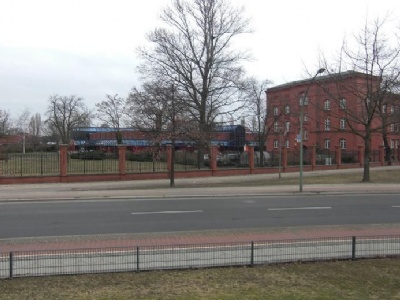Spandau Prison
Spandau is a district in north-west Berlin, where a military prison was built in 1876. As of 1919, civilians were also detained and at most about 600 prisoners were imprisoned. After the Berlin Reichstag fire in February 1933, the prison was used by the Nazis to imprison political opponents. These prisoners were later sent to other prisons/concentration camps. In October 1946, as a result of the main Nuremburg trial, 7 out of 21 accused Nazis were sentenced to imprisonment between 10 – 20 years, Karl Doenitz, Walter Funk, Erich Raeder, Baldur von Schirach, Kostantin von Neurath, Albert Speer and Rudolf Hess.
Where the convicted would serve their sentences was also a matter with a lot of political content, it was important that all the victorious powers, Soviet Union, Britain, United States and France, could agree on this. Berlin was the obvious choice because the former capital was divided into four occupation zones. In addition, there was Spandau prison, which also met the security criteria. But that these seven top Nazi prisoners would be imprisoned together with other ”ordinary” prisoners was unthinkable. Therefore, the remaining prisoners were transferred before the seven were transferred there in July, 1947.
The prisoners were guarded according to a schedule by the four victorious powers at intervals of one month at a time. The prisoners were not allowed any permissions and were rarely allowed to receive family visits. They were allowed to write a few (censored) letters to family members. The only form of exercise and socializing they got was in the prison yard. There they could do some gardening and talking to each other. Funk, Neurath and Raeder were released prematurely due to health reasons. Doenitz, Schirach and Speer served their sentences and from 1966, when Speer and Schirach were released, Hess was the only prisoner left in prison. As a lone prisoner, Hess became the world’s most expensive and guarded prisoner and the Western allies discussed whether it would not be more appropriate to transfer Hess to a smaller prison or even release him. Both economic, health and humanitarian arguments were put forward for Hess’ release. However, this was opposed by the Soviet Union (who had veto) and therefore Hess remained in prison until his death in August, 1987.
The official cause of death was suicide, but conspiracy theories claim that Hess was actually murdered. When Hess died, the United States were on guard. Immediately after Hess’s death, a fence was set up outside the prison to keep Nazi sympathizers at a distance. Later on the prison was demolished and the mortar was pulverized and thrown into the North Sea. The victor powers understood that if the prison would remain there would be a symbolic place for Nazi martyrdom and a place of pilgrimage for sympathizers. Hess has nevertheless become a symbol of Nazi martyrdom in neo-Nazi circles and is celebrated annually on the day of death, August 17.
Current status: Demolished (2009).
Address: Wilhelmstrasse 22, 13593 Berlin.
Get there: Car.
Follow up in books: Speer, Albert: Spandau: The Secret Diaries (1976).


On the site where the prison once stood, there is now a small shopping centre with parking lots. The only building that remains and in some ways belonged to the prison is a guardhouse that stood next to the prison’s main entrance. The linden trees that the prisoners planted in the prison yard are also left and are in the parking lot. Otherwise, there is nothing that reminds or informs about the last seven prisoners of the prison.